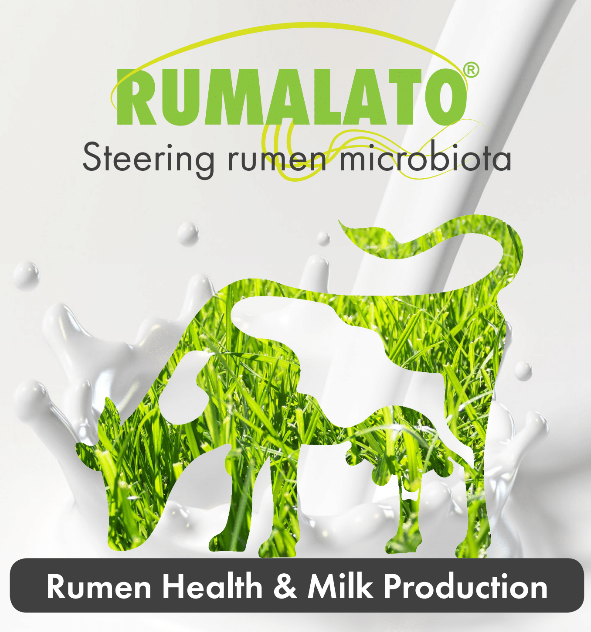
Use of RUMALATO for improving feed efficiency and reduce the enviromental impact in ruminants
In the last decades, there has been a growing concern about the contribution of livestock to greenhouse gas emissions (GHG). However, it's important to note that livestock only accounts approximately from 6 to 8% of total greenhouse gas emissions (Richi et al., 2020). Among these emissions, a portion (around 18%, IPCC, 2023) stems from methane emissions (CH4) partly generated through the enteric fermentation process in ruminants. This process involves populations of ruminal microorganisms (archaea, bacteria, fungi, and protozoa) that can convert food (products and byproducts), which are largely unsuitable for human consumption, into energy utilized to sustain their metabolic functions. Thus, the role of livestock, particularly ruminants, is vital for the efficent use of these resources.
As previously mentioned, CH4 is a gas synthesized by microorganisms within the rumen and it is predominantly (>95%) expelled into the atmosphere via eructation (exhaled). The consequences of this CH4 production are multifaceted. Firstly, CH4 possesses elevated calorific potency (24-28 times greater than CO2). Nonetheless, methane's lifetime spans between 10 and 15 years, whereafter it metamorphoses into CO2, potentially subject to recapture by plants through photosynthesis and reutilization by ruminants for sustenance. This initiates a short-term carbon cycle known as the Biogenic Carbon Cycle, wherein a substantial proportion of the discharged CH4 is reabsorbed (Pereira et al., 2022). Secondly, this CH4 production bears significant economic implications for producers, as approximately 10-15% of an animal's energy intake is intended to its production (Jonhson and Jonhson, 1998). This energy could otherwise be directed towards milk/meat yield or the optimal functioning of metabolic processes. This reduction of efficiency results in economic losses for producers and demanded a comprehensive intervention across all disciplines of animal production. This can encompass nutritional strategies (Beauchemin et al., 2008; Parmar et al., 2019), selection methodologies (González-Recio et al., 2020), breeding, and/or management approaches aimed at enhancing efficiency. This avenue of exploration has been pursued by NOREL in recent years (results published in ASAS, 2023).
In addition, in the last years, new measurement systems have facilitated greater precision in quantifying emissions both at the farm level and on an individual basis. This has been achieved through the development of respiration chambers (considered the Gold Standard for individual measurements) and commercially applicable systems such as Sniffers or GreenFeed. In this context, NOREL conducted a study involving small ruminants (goats) in collaboration with the University of Granada, as presented at ASAS (2023).
With the aim of assessing the impact of malate supplementation as an additive for mitigating enteric CH4 emissions, a trial was conducted, both in vivo and in vitro. The in vivo trial involved direct emissions measurement using respiration chambers with 12 non-pregnant goats. These goats were divided into 2 groups: one group was fed a control diet, while the other received 12 g/day of RUMALATO®. After a 2-week adaptation period, their consumption, body weight, and methane production expressed in L/day were measured. These results were expressed as liters of methane per kilogram of ingested dry matter (L CH4/kg DMI). Dry matter consumption did not differ between the CTL (control) and RUMALATO groups. The production of CH4 per kg of DMI was 15% lower in the RUMALATO group (22.2 vs 26.1 liters/kg DMI for RUMALATO and CTL respectively, P = 0.043). In terms of improving feed efficiency, this difference would amount to approximately 2.5 g of CH4 per kg of dry matter ingested, which would equate to about 96 g of barley per kg of dry matter intake (DMI). Consequently, this represents an improvement in the utilization of the ration and, therefore, an enhancement in its profitability.

